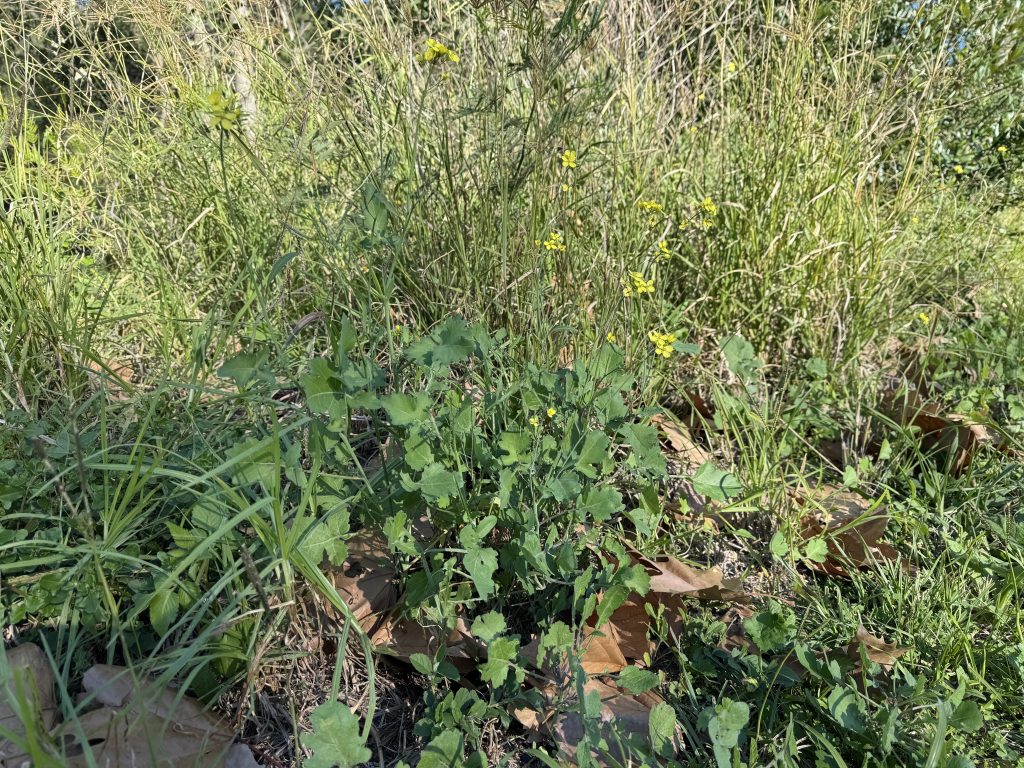How to Get Rid of African Lovegrass in Your Lawn
African Lovegrass (Eragrostis curvula) is a tufted, grassy weed that’s most prevalent in Australian pastures and grazing land, but it can impact home lawns too. Originally ...

Mustard Weed (Sisymbrium officinale), also known as wild mustard or hedge mustard, is an aggressive broadleaf weed commonly found invading Australian lawns, particularly during the cooler months.
A part of the Brassicaceae family, Mustard Weed looks like many other common broadleaf weeds but only a few selective herbicides on the market are registered to control mustards, so it’s important to positively identify the weed so you can effectively treat it.

While Mustard Weed can grow vertically as it matures (taller versions up to 80cm are common along Australian roadsides and in pastures), smaller plants are more likely to be found in Australian lawns and they’ll feature a basal rosette of jagged, deeply lobed leaves on stems that are a purple colour at the centre. Mustard Weed will blossom with bright yellow flowers.
Mustards are known to have a unique aroma when their leaves are crushed or disrupted, and they spread rapidly via their seeds, making the most effective solution a selective post-emergent herbicide to treat an outbreak, followed up by a pre-emergent herbicide regiment to prevent future outbreaks.
Mustard Weed is prevalent across temperate regions of Australia including Victoria, New South Wales, South Australia and southern parts of Western Australia. It is particularly opportunistic in lawns where the grass coverage is thin or stressed, and is known to affect all common warm season grasses including Buffalo, Couch, Bermuda, Kikuyu, and Zoysia.
Most active during Autumn and Winter, Mustard Weed germinates when soil temperatures drop, maturing quickly and producing thousands of seeds by early Spring.
It spreads exclusively via seed which disperse easily when the plant is disturbed, and they can remain viable in soil for several years, making it a persistent problem without proper management.
Controlling Mustard Weed starts with catching it early—before it flowers and sets seed. For small outbreaks in home lawns, hand pulling can be effective if done when the soil is moist, ensuring the entire taproot is removed.
Repeated mowing before flowering can help reduce seed production and limit spread, though this won’t eliminate existing plants.
For larger outbreaks or more mature plants, selective herbicides are a tool that many lawn lovers rely on, though Mustards can be notoriously difficult to control. Contra M Duo’s active ingredients Dicamba and MCPA are registered to control Mustards, but it is not safe for use on Buffalo lawns.
To ensure efficacy on the first application of any herbicide, it’s recommended to apply in conjunction with a surfactant like Wetter 600 for improved adhesion to the leaf.
Alternatively, for stubborn weeds or for isolated outbreaks, using a non-selective herbicide is always an option. PCT Glyphosate 360 will affect any plant it comes into contact with so blanket spraying is not recommended. Some lawn lovers opt to dab non-selective herbicides like Glyphosate-based products onto the leaves and crown of the plant using a small sponge or brush.
When using chemical treatments, always follow manufacturer instructions when it comes to necessary protective equipment and safe re-entry times for humans and animals. Apply on a dry day with minimal wind to prevent drift onto desirable grasses.
Natural remedies like vinegar and boiling water will cause discolouration and even critical damage to the foliage, however these remedies are likely to be largely ineffective against the tap root system or seeds meaning there’s a high chance of the weeds returning within weeks.
To prevent Mustard Weed from returning, applying a high-quality pre-emergent herbicide is a proactive solution. Pre-emergents work by creating a barrier in the soil that inhibits seed germination, effectively stopping weeds before they establish.
A good pre-emergent herbicide, such as those containing Prodiamine (such as Spartan in liquid form, or Onset GR in granular form) or Oxadiazon (like Echelon Duo or Oxafert), offers up to six months of protection against a broad range of invasive weeds.
This long-term approach not only reduces the need for repeated manual or chemical interventions but also contributes to a healthier, more resilient lawn with less pressure from invasive weeds.
Whether you’re looking for a quality pre-emergent to minimise the risk of Mustard Weed invading your much-loved lawn, or you need a post-emergent herbicide to control a Mustard Weed outbreak, you’ll find all the supplements and chemicals you need to keep your grass in top shape at the myhomeTURF Online Shop; home to hundreds of market-leading products that ship Australia-wide.